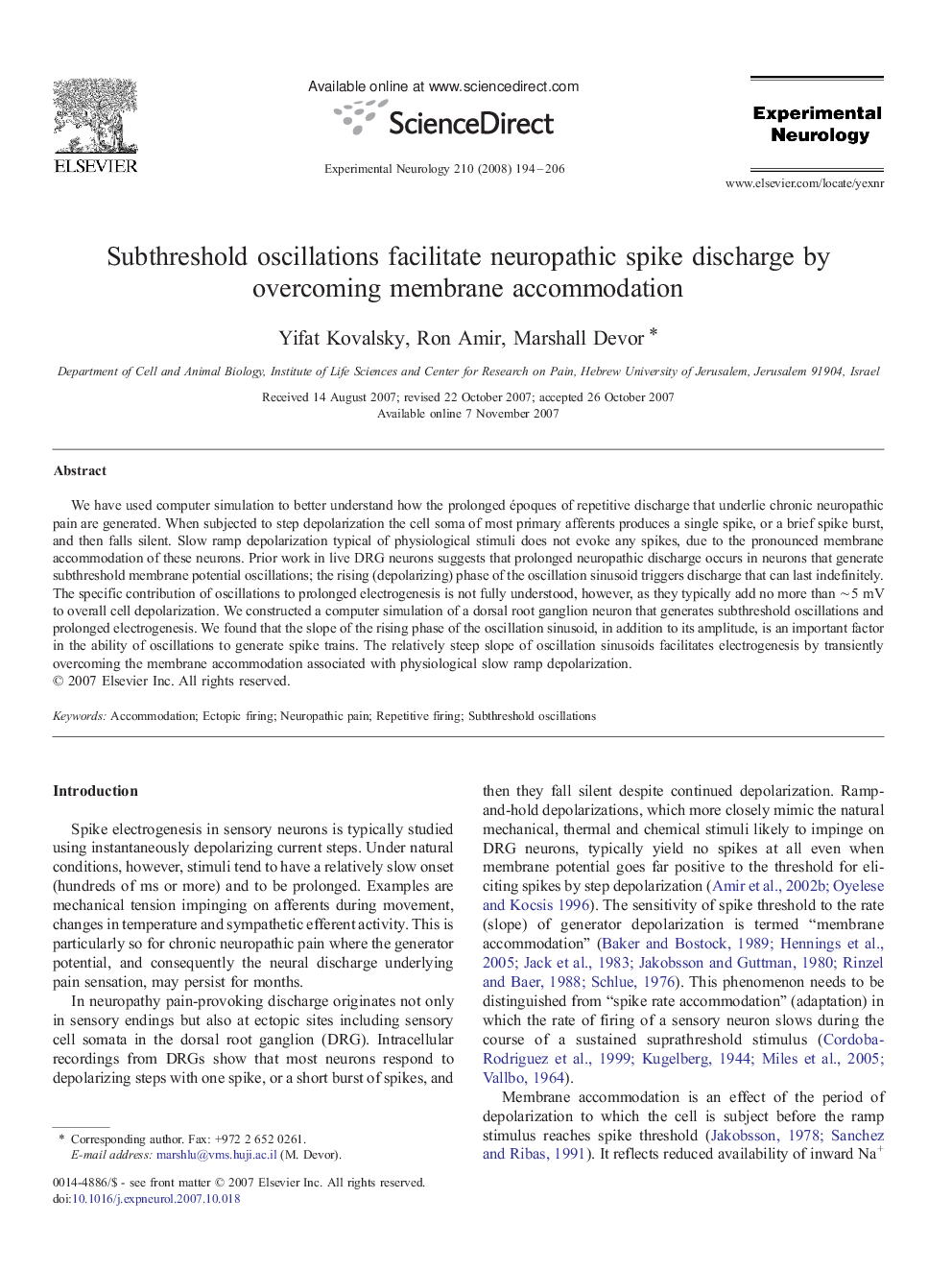| کد مقاله | کد نشریه | سال انتشار | مقاله انگلیسی | نسخه تمام متن |
|---|---|---|---|---|
| 3056828 | 1186577 | 2008 | 13 صفحه PDF | دانلود رایگان |

We have used computer simulation to better understand how the prolonged époques of repetitive discharge that underlie chronic neuropathic pain are generated. When subjected to step depolarization the cell soma of most primary afferents produces a single spike, or a brief spike burst, and then falls silent. Slow ramp depolarization typical of physiological stimuli does not evoke any spikes, due to the pronounced membrane accommodation of these neurons. Prior work in live DRG neurons suggests that prolonged neuropathic discharge occurs in neurons that generate subthreshold membrane potential oscillations; the rising (depolarizing) phase of the oscillation sinusoid triggers discharge that can last indefinitely. The specific contribution of oscillations to prolonged electrogenesis is not fully understood, however, as they typically add no more than ∼ 5 mV to overall cell depolarization. We constructed a computer simulation of a dorsal root ganglion neuron that generates subthreshold oscillations and prolonged electrogenesis. We found that the slope of the rising phase of the oscillation sinusoid, in addition to its amplitude, is an important factor in the ability of oscillations to generate spike trains. The relatively steep slope of oscillation sinusoids facilitates electrogenesis by transiently overcoming the membrane accommodation associated with physiological slow ramp depolarization.
Journal: Experimental Neurology - Volume 210, Issue 1, March 2008, Pages 194–206